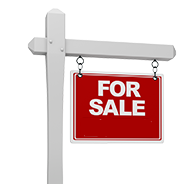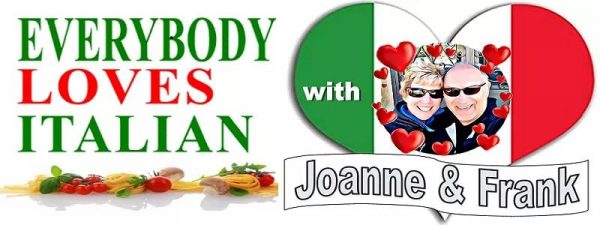Discovering Siena, Home of the Palio and Panforte
Discovering Siena, Home of the Palio and Panforte
Panforte is an ancient Christmas dessert from Tuscany whose origin is a mix of history and legends that the citizens of Siena continue to pass down from generation to generation.
What a better way to celebrate Christmas than a family lunch? In Italy the holiday season is still the best moment to spend time with family, to eat the traditional Christmas recipes and, above all, the traditional Christmas cakes!
Panforte and Panpepato are ancient desserts from Tuscany: the origin of these Christmas sweets is a mix of history and legends that the citizens of Siena continue to pass down from generation to generation.
These delicious Italian fruit cakes are rich in nuts, honey and spices. The flavors are strong, as the meaning of the Italian word Panforte suggests (it means strong bread).
Today let’s try to imagine a tour around the places where Panforte originated, where you can still savor the ancient flavors of traditional Italian cuisine.
What to see in Siena
Arriving by train you can find a shopping mall in front of the train station. Inside there is an escalator that will take you up to the city centre, situated just beyond an ancient door called Porta Camollia. You can start your Siena tour from this door wich is the etrance the “Contrada dell’Istrice” (meanin “porcupine district”).
The Contrades of Siena were ancient institutions that may be compared to districts, each one having its own government, emblems, colours, coat of arms, titles of nobility, festivities, patron Saints, delimited territories and population. But we’ll talk about this later.
If you take Camollia Street you will enoy the magic of the historical city center of Siena. Go straight on this street, even when its name changes into Via Banchi di Sopra.
In Piazza Salimbeni you can see the headquarters of the Monte dei Paschi, one of the oldest banks in the world. The Palace is in Sienese gothic style; it was built in the XIV century and restored in neo-Gothic style in the 19th century, maintaining the typical features of Gothic architecture: three-light windows, battlements and pointed arches.
You will arrive in Piazza del Campo, the square designed during the Council of Nine, the so-called “good governance”. The square is shaped like a conch shell and is divided into nine segments whose vertex angles converge on the town hall. Around the square there is a road of 333 meters, more than 1000 feet. This is the circuit where the Palio of Siena horse race takes place!
The Palio di Siena horse race
If you wish to visit Tuscany in summer there is a thing that you must do in Siena: to see the worldwide famous Palio.
Siena is always associated with the Palio, a secular horce race in wich the Contrades of Siena compete to win the “Palio”, a rectangular silk painted cloth.
The Piazza del campo horse race takes place twice a year: on July 2 and on August 16. It’s an event that people from Siena live with great participation: it isn’t a representation just for turists, it’s an important event for citizens. The Contrada is not like a team to support, but it’s like the “motherland”, a place to love and defend.
Torre del Mangia and the Town Hall
One of the sides of Piazza del Campo is framed by the city hall and his tower. Torre del Mangia, this is its name, is as high as the bell tower of Siena’s Cathedral (which is located in a higher part of the city). This fact symbolizes the balance achieved between the heavenly and the earthly power. If you climb to the tower’s top it will enjoy one of the best Siena panoramic views.
Siena’s town hall was built approximately in 1297-1310 by the Government of the Republic of Siena (Council of Nine) as his headquarter. Inside, there is the Municipal Museum where you can see many famous paintings, including “Guidoriccio from Fogliano” (1328) by Simone Martini and the cycle of “Good Government” (1339-39) by Ambrogio Lorenzetti.
Let’s move to the Cathedral but first let’s stop a second at the Chigiana Academy palace, one of the most beautiful buildings of Siena’s noblesse: here you can visit an exhibition of paintings, sculptures and artifacts. In this building there is also the Chigiana Music Academy, a music school of great tradition.
At the intersection with Via del Capitano you can meet the She-wolf, symbol of Siena.
Few people know that Siena, as Rome, is symbolized by the She-wolf. The two children are not Romulus and Remus, but Senio (or Seno) and Aschio (or Ascanio), sons of Remus. After this was killed, the children went to Etruria bringing with themselves the she-wolf wich had nursed their father and uncle.
The city was founded by two brothers, and was named by Senio, the older of the two. Unlike the Capitoline wolf, in the Sienese iconography the She-wolf statue looks ahead.
Il Duomo di Siena, Siena Cathedral
Taking the street on the right you reach the square of Siena cathedral where you can admire the beautiful building built in Sienese Romanesque-Gothic style. The Cathedral of Santa Maria Assunta, this is its full name, was built over a previous religious building, which had replaced a temple for the goddess Minerva.
The predominant pattern, inside and out, is composed by rectangular white and black bands (the colors of the city). Inside there are beautiful paintings, mosaics and the gorgeus Piccolomini Library, and in some periods of the year you can also admire the decorations of the floor.
The visitor will notice that there is a part of the cathedral never completed: there was maybe a too ambitious and expensive project that wanted the Siena Cathedral as the largest in Europe. Also because of the economic difficulties, related to the plague in 1348, the work was left unfinished.
In front of the Duomo di Siena you can visit the museum of Santa Maria della Scala, one of the oldest existing hospitals in Europe. It was a place of shelter and support for the pilgrims, in fact it is situated along the Via Francigena. Originally operated by the clergy, since the XV century it has been run by the Municipality. Today it houses a museum complex that hosts important exhibitions.
The Fountains
The Fountains of Siena are important places of the city. The fountains are real architectural masterpieces: you can enjoy them walking through the old town. Each district has a Fountain whose water is used for the Contrada’s baptisms.
The queen of the fountains is Fonte Gaia designed by Jacopo della Quercia around 1419. It’s situated in Piazza del Campo and it is a wonderful work of art.
Above, a map of Siena‘s contrades, all bearing animal names.
Images:
Cover – Phillip Capper CC 2.0
Remizolya Siena, Piazza Salimbeni CC 2.0
Cristian Santinon Siena – Piazza del Campo CC 2.0
She-wolf
Faungg’s photos – Siena Cathedral, Siena, Italy CC 2.0
Join Joanne and Frank on Facebook at
Everybody Loves Italian
and
Visit us on the web at EverybodyLovesItalian.com
This site contains product affiliate links. We may receive a commission if you make a purchase after clicking on one of these links.




